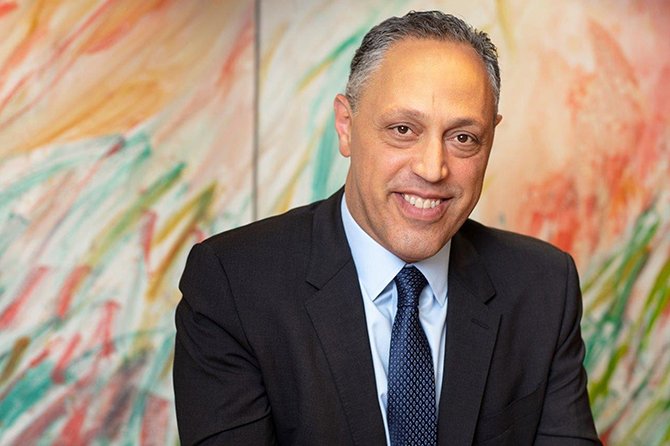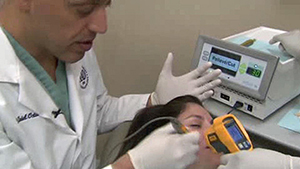DR. ARIEL OSTAD
Turning Back The Hands Of Time

By Ruth J. Katz
Fillers are the workhorse for fighting aging,” points out Dr. Ariel Ostad, a board-certified cosmetic dermatologist and dermatologic surgeon on the Upper East Side. He further explains that today there is a plethora of diverse fillers available, each of which can help subtly transform a face, temporarily reversing the march of time. “I work like a painter with a palette, and can ‘sculpt,’ as if it were, with a syringe. It is important to study each face,” he explains, “to determine which fillers will work best to achieve the desired results for a particular patient.”
In practice over 20 years, Dr. Ostad has an impeccable CV: A graduate of both New York University (magna cum laude and Phi Beta Kappa) and its medical school, he went on to do an internship at Massachusetts General Hospital at Harvard Medical School, and then a residency in dermatology, including cancer studies, at NYU. He completed a fellowship in Mohs micrographic surgery, laser, and cosmetic surgery at UCLA.

A highly entrepreneurial professional, Ostad was faced with challenges when he arrived in America at age 12 from Iran, with an older sister, sans parents, who followed a few years later: He spoke no English and he says he watched a lot of TV to augment his more formal lessons! The two youngsters were under the wing of an uncle, a physician, whom he admired. The sciences, he notes, fascinated him. “Yet,” he states, “I was innately drawn to the arts, too, and I wanted to find a way to combine both.” Inspired by his uncle, he felt that medicine “was a way to meld art and science.” Today, as a clinical assistant professor of the Department of Dermatology at his alma mater, he hopes that he can, in turn, enthuse his students.
He has always been a self-starter and within a year-and-a-half of completing his studies, he opened a practice. The Upper East Side was always aspirational to him, so that is where he chose to hang his proverbial shingle. Today, his practice has a staff of a dozen and in addition to teaching and maintaining office hours, he has found the time to develop a line of over 20 products for skin care.
New York Lifestyles recently sat down with him to discuss “turning back the hands of the clock.”
Explain the effects of aging on the face.
Underlying collagen is lost with age and the skin is simply not as tight as it used to be. A laxity develops, presenting with, among other things, jowls, thinning and sagging of the lips, flattening of the upper cheeks, and sagging of the neck that creates vertical bands, that gobble look. Laugh lines develop, the eyebrows drop, there is sagging of the upper eyelids, and crow’s feet and forehead creases start to appear. This loss of collagen is apparent in other areas of the body, as well—even the hands present hollows and the buttocks droop. And not to be overlooked, there is a psychological toll on people.
So, what can we do?
My approach is multi-pronged, and might include, in addition to fillers, ultrasound to tighten the face, and perhaps even liposuction. Patients don’t want down time these days and fillers have given us exciting, new technologies and techniques that don’t necessitate at-home recovery time. Addressing these issues early—in the late 20s or early 30s—helps to avoid surgery for a longer period. Ultrasound delivers waves of energy deep into the tissue, and unlike lasers, which treat the surface, ultrasound can penetrate to deeper levels and lift the skin, improving the jaw line, tightening the neck, and lifting the eyelids.
Please explain a little more about ultrasound, how it is administered.
Ultherapy is non-invasive and ultimately lifts and tightens. The results happen steadily, but they begin immediately with a gradual stimulation of collagen. That collagen helps lift the skin, but it does not create volume; the loss of fatty tissue below the skin needs to be addressed with fillers. It is why I say it is a multi-pronged approach.
And what about more invasive measures?
Liposuction, performed with local anesthesia, is far less complicated than it once was; today we have microcannulas, which are extremely blunt and because they are not sharp, they can safely suction out fat with no bleeding or pain. Moreover, patients can go back to work in a few days.
For more information on Dr. Ariel Ostad, visit drarielostad.com.




